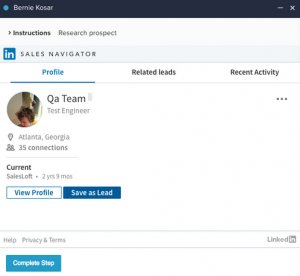Three agile practices to drive effective collaboration, sustainable work cycles and continuous improvement.
When marketers are content and happy in their roles, it has a cascading effect on their teamwork, leading to improved collaboration. People who are part of satisfied teams are empowered and supported by leaders to develop new skills, helping the team and individual team members stay competitive in the fast-paced marketing world.
“Teamwork is essential to a company’s success,” says John J. Murphy, author of “Pulling Together: 10 Rules for High-Performance Teamwork.” “Each individual has unique gifts, talents and skills. When we bring them to the table and share them for a common purpose, it can give companies a real competitive advantage.”
One of the many benefits of agile marketing is improving team satisfaction and growth. However, this is a highly subjective area, so many companies focus on concrete things, like tools and meetings or how many teams they can stand up. While those items are a necessary part of applying agile marketing, they’re not what leads us to the right outcomes.
Below are three practices that your marketing teams can incorporate that will lead them to the benefit of team satisfaction and growth.
1. Partner on work to build skills that benefit the whole team
In agile marketing, teams are working toward delivering customer-ready marketing in short cycles. To do that effectively, team members need to flex outside of traditional roles and be willing to pitch in when work needs to get done.
When team members don’t flex beyond their core skills, they tend to roadblock their team from getting work to completion and out to market.
I once worked with a very agile group of graphic designers who were extremely productive in producing done work. The problem, however, was this siloed work was only done for them and not actually usable to customers. After all, graphic design without any copy is like peanut butter without jelly; they need to go together!
In marketing, we often pair together a writer and designer. While they have distinctly different skill sets, they are complementary in that it requires both of them to bring any deliverable to customers. So the writer may learn some basic design skills and the designer may be able to proofread.
By partnering together, teams can avoid significant delays in releasing work and avoid any complete halts if someone becomes sick or leaves their job.
2. Plan work in short cycles to maintain a sustainable pace
In agile marketing, the goal isn’t to give teams more work to do — it’s to work on the right work at the right time while maintaining a sustainable pace. Planning cycles that are five or 10 business days long are the most impactful.
The idea is that the team self-selects work from the prioritized marketing backlog of work, only choosing the work they feel confident can be completed during the cycle without any crazy overtime or racing to an unrealistic timeline.
The team can get even crunchier with measuring sustainability if they can track planned work over completed work. And since agile teams comprise the same small group of marketers, they can improve their planning each cycle by looking historically at what they’ve accomplished.
Given the sheer visibility and transparency of working this way, any unplanned work is easily identified and called out rather than creeping up unexpectedly. When unplanned work comes through, the team meets to decide how it will impact their planned work and rather than being additive, they have trade-off conversations with stakeholders.
While this feels like a dream to most marketers, with a little discipline and practice, this scenario is attainable. While there’s fear of saying no to people, what we’ve learned is that stakeholders appreciate a predictable team and would rather hear not now or no than hear about missed deadlines after the fact.
When teams work together sustainably, burnout is avoided and stakeholder relationships improve because of the transparency and predictability that the team can share. This impacts team satisfaction and reinforces that empowered teams can be trusted to deliver on expectations reliably.
3. Hold a Team Improvement session to improve how the team works together
A Team Improvement session is where the agile marketing team meets each cycle to focus on continuous improvement in how they work together. It takes a tremendous amount of psychological safety to be open to sharing new ideas and commenting on what’s working and what doesn’t on the team.
Leaders allow the team to meet on their own and give them the space they need to solve problems as a team. Let the team know that you’re there if a situation needs to be escalated, but encourage them to creatively look for improvement ideas and give them the space and trust to try new ways of working without permission or reprimand if they fail.
By allowing self-organization in a psychologically safe environment, teams will naturally grow and improve how they work together.
Measuring team satisfaction and growth
If you’d like to measure how well your teams are doing in this category (and three more), check out our new ebook, 4 Pillars to Agile Marketing Success. You’ll also find links to surveys for each pillar that you can give your team to gauge where you are today. Plus, you’ll find actionable improvement ideas.
Read the previous article on Pillar 1, 3 ways to align marketers to business outcomes.
The post 3 ways to improve team satisfaction and growth with agile marketing appeared first on MarTech.
MarTech(1)






